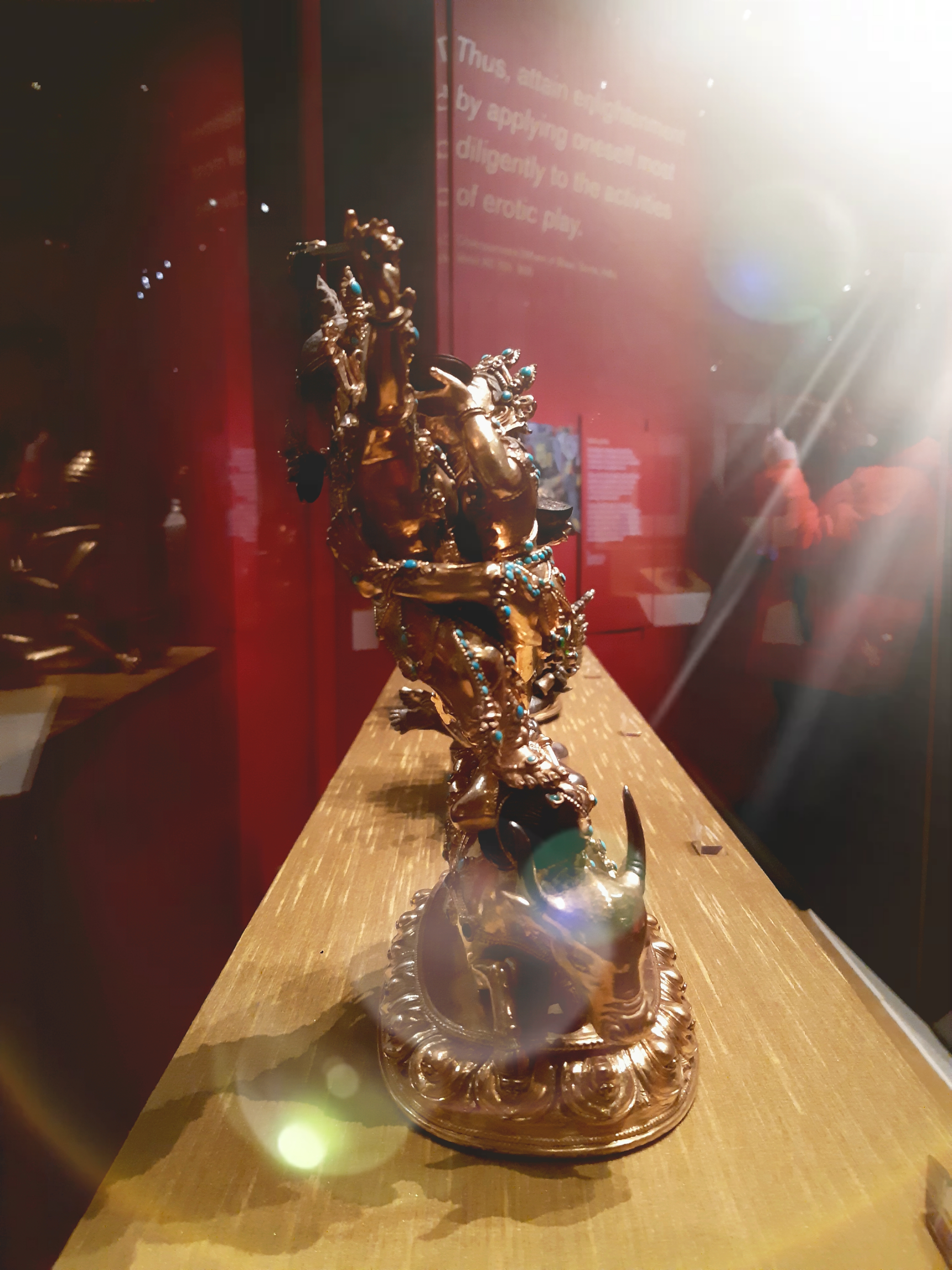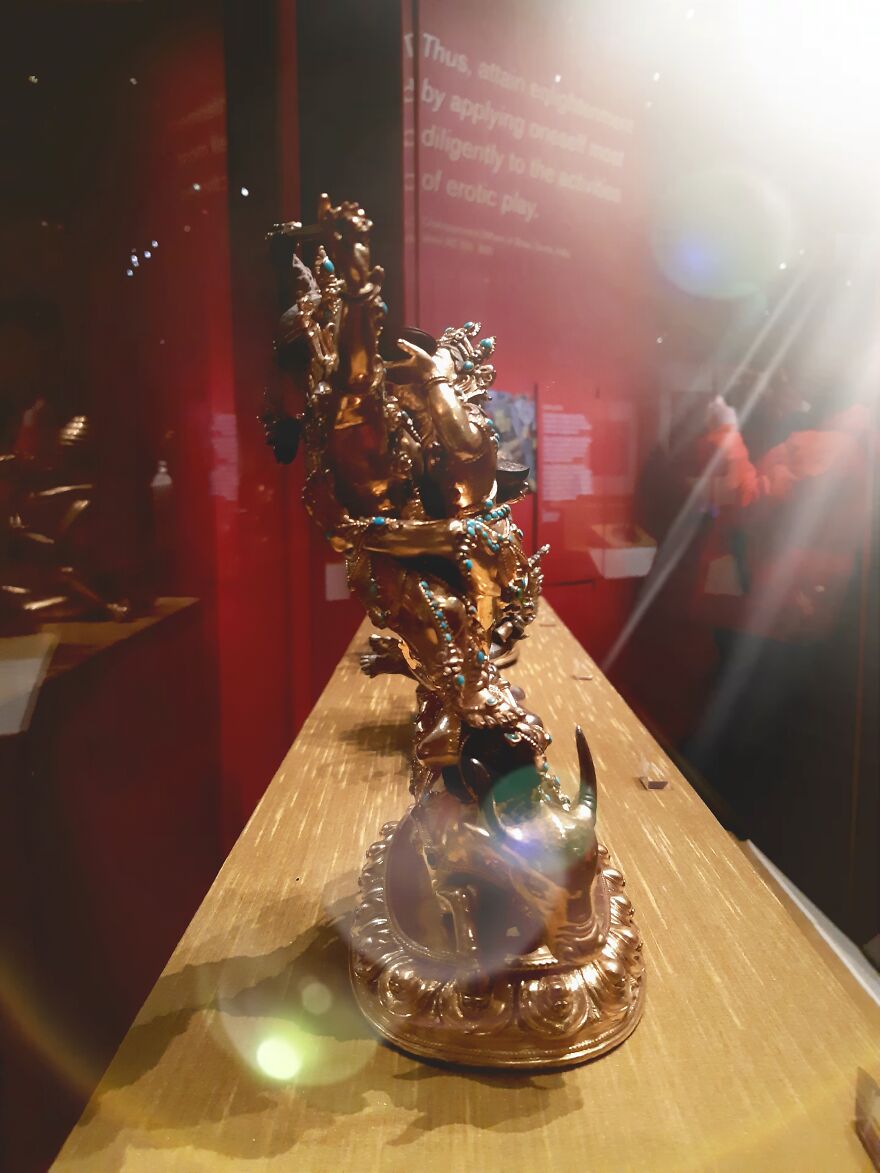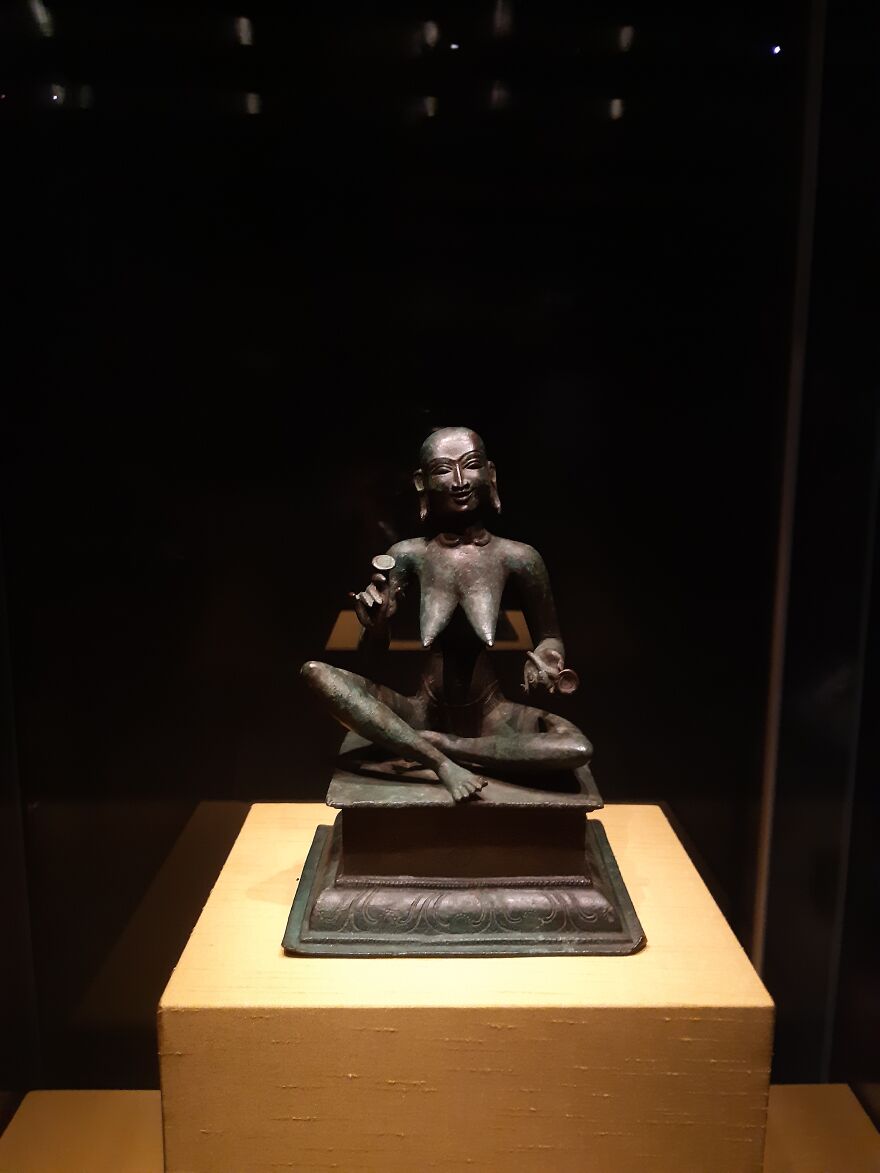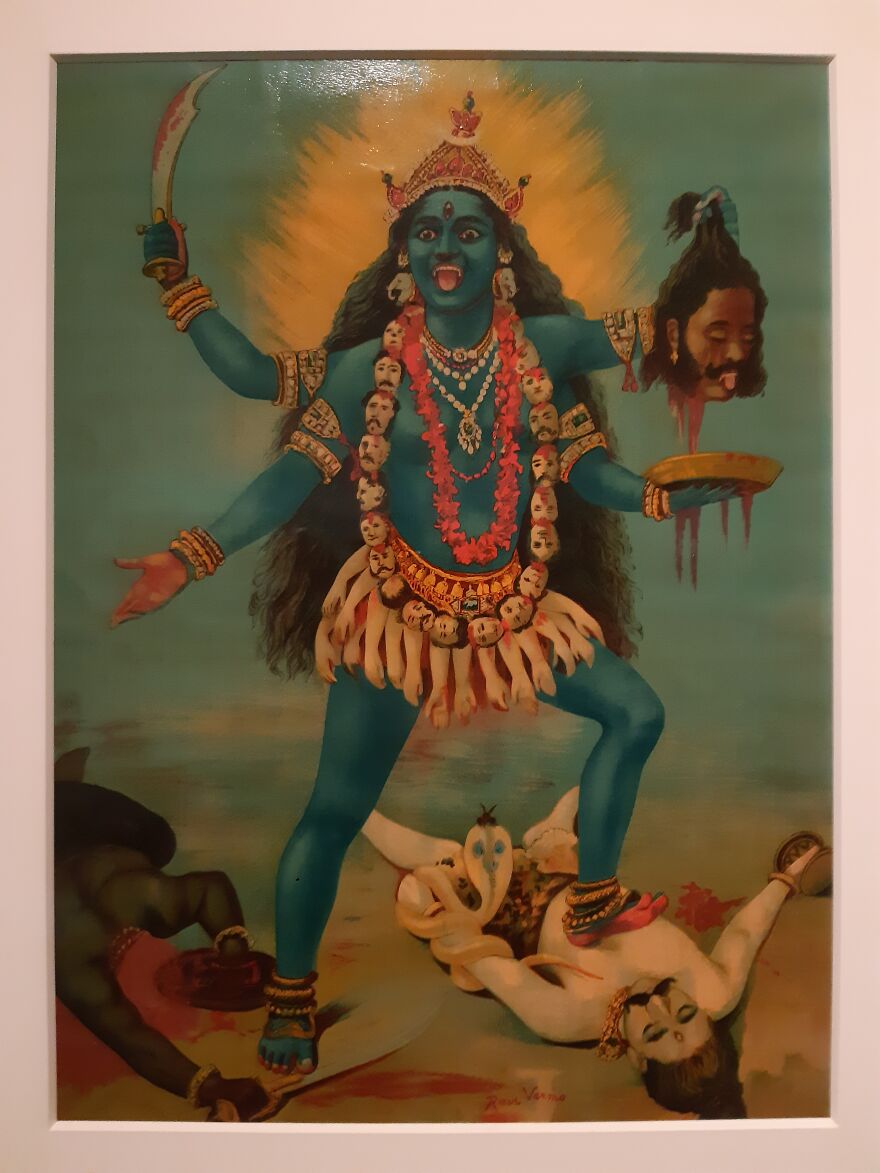It seems a Londoner’s chance to roll one’s stone up to the summit of enlightenment has finally emerged. After five years of intensive research the British Museum has presented an outstanding exhibition called “Tantra: Enlightenment to Revolution”. Indeed, many of these artefacts trample on the socially acceptable norms and daringly scream revolution – whether it’s cultural, political, social or personal. 😜
Although to the majority of people the fact that Tantra is more than a lifestyle promoting sex isn’t an eye-opening discovery, the slightly dimmed red room was still thoroughly examined by most of the visitors. It got a little crowded and thus uncomfortable (because of the 2 metre situation, of course). But I can see why: certainly, one can get inspiration for achieving enlightenment from the merging bodies of Hindu deities.
A satisfying example is the sculpture of Tantric Buddhist meditational deities Raktayamari (Red Enemy of Yama) in sexual union with Vajravetali (Thunderbolt Zombie). Apparently the piece was created to support the practitioner’s imagination when trying to overcome one’s ego and achieve self-deification.
Now, how exactly is this sculpture supposed to lead to spiritual enlightenment? If you’re the practitioner, you start with internalising these two deities which should induce recognition of female (wisdom) and male (compassion) principles within you. Eventually the two unified bodies should help you merge these principles internally and maybe even transcend your perceived limitations.
However, let me remind you that Tantra goes way beyond divine sexual intercourse. Conceived in India in the 6th century, this philosophy has always been around to challenge norms and morals of the righteous people. For example, placing female power on the pedestal is a very revolutionary move, at least in the patriarchal world where femininity is perceived as a weakness and many women are chained to predetermined passive roles.
While some religions are beating women down to this day, Tantra is worshiping womanhood as a divine power which, according to the Tantric philosophers, the entire physical world is charged with. That explains why our Earth is a Mother! A mother that carries such rebellious children as Karaikkal Ammaiyar, one of Nayanars poets that composed verses for Shiva and Bhairava in the 6th century AD.
In case you’re not aware, Shiva is one of the supreme beings in Hinduism who creates, protects and transforms the Universe, and Bhairava is a manifestation of Shiva associated with annihilation. Perhaps Karaikkal Ammaiyar was encouraged by these deities when decided to let go of her socially acceptable role as a housewife and seek spiritual enlightenment by devoting her life to Shiva.
The story goes that this woman refused to be conventionally beautiful and by doing this she challenged the norms of the patriarchal society. What surprises me is the fact that being a human being on your own terms is still a rebellious act in the 21st century. Has this world been going backwards? Maybe Kali should intervene!
Hindu goddess Kali is an expert in destroying evil forces. She even became a symbol of resistance and liberation from the British grip on India and you know how it ended. Christian patriarchs were appalled by her ferocity as they always seemed to know better how people in various cultures should carry themselves.
Above is one of several Kali’s images displayed at the exhibition. Kali is often portrayed with her tongue sticking out as if she’s thirsty for more blood of the evil. On a philosophical level the decapitated head symbolises an ego one has to get rid of in order to achieve spiritual enlightenment. However, in the context of colonial India it was associated with the defeat of the Western occupants. How does the British Museum approach the colonial era in this enlightening exhibition? Acknowledging the supreme power of Hindu deities is a decent start, I guess.
At least you can’t deny their power in the 60’s counterculture! From now on, whenever I wear my “Rolling Stones” t-shirt, I’ll always think of Kali, the goddess of time, doomsday and death, or the supreme creative force.
Although this exhibition isn’t the place to learn about Mick Jagger’s passion for Hindu goddesses, you’ll be presented with the fact that the iconic logo of “The Rolling Stones” was inspired by Kali’s image. This way the band conveyed their rebellious spirit and perhaps their thirst for enlightenment. 😜
These are only a few picks from this comprehensive, multilayered exhibition. If you’re after spiritual enlightenment yourself or are contemplating breaking the shackles of conventional way of life, you may also wish to go down to the museum to discover narratives about Yoginis, even walk inside their temple, try reading the tantras or simply admire the power of authenticity.
—-
“Tantra: Enlightenment to Revolution”
Open until 24 January 2021
British Museum
www.britishmuseum.org
—-
Original post: www.zivilekasparaviciute.com









1
0